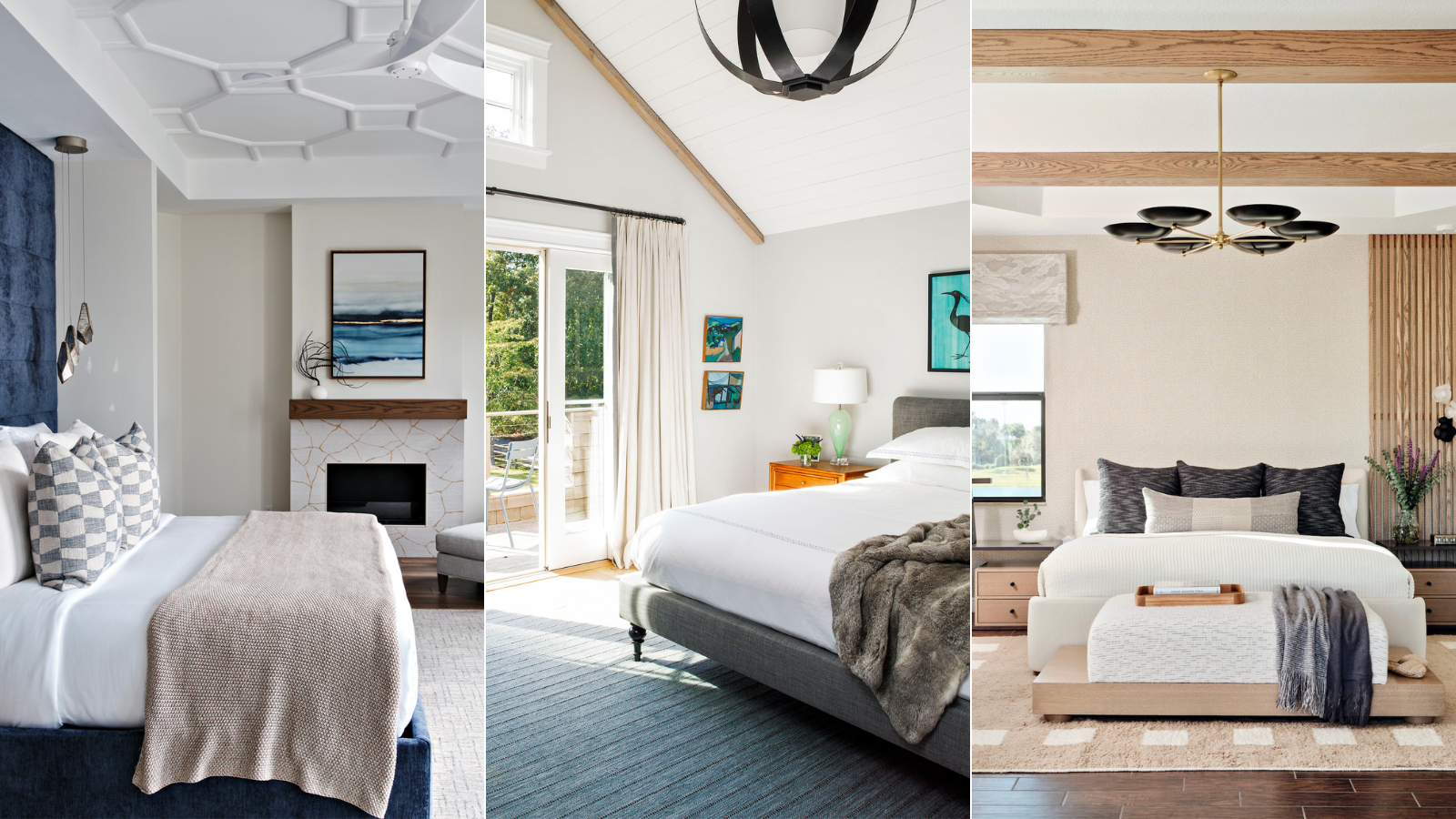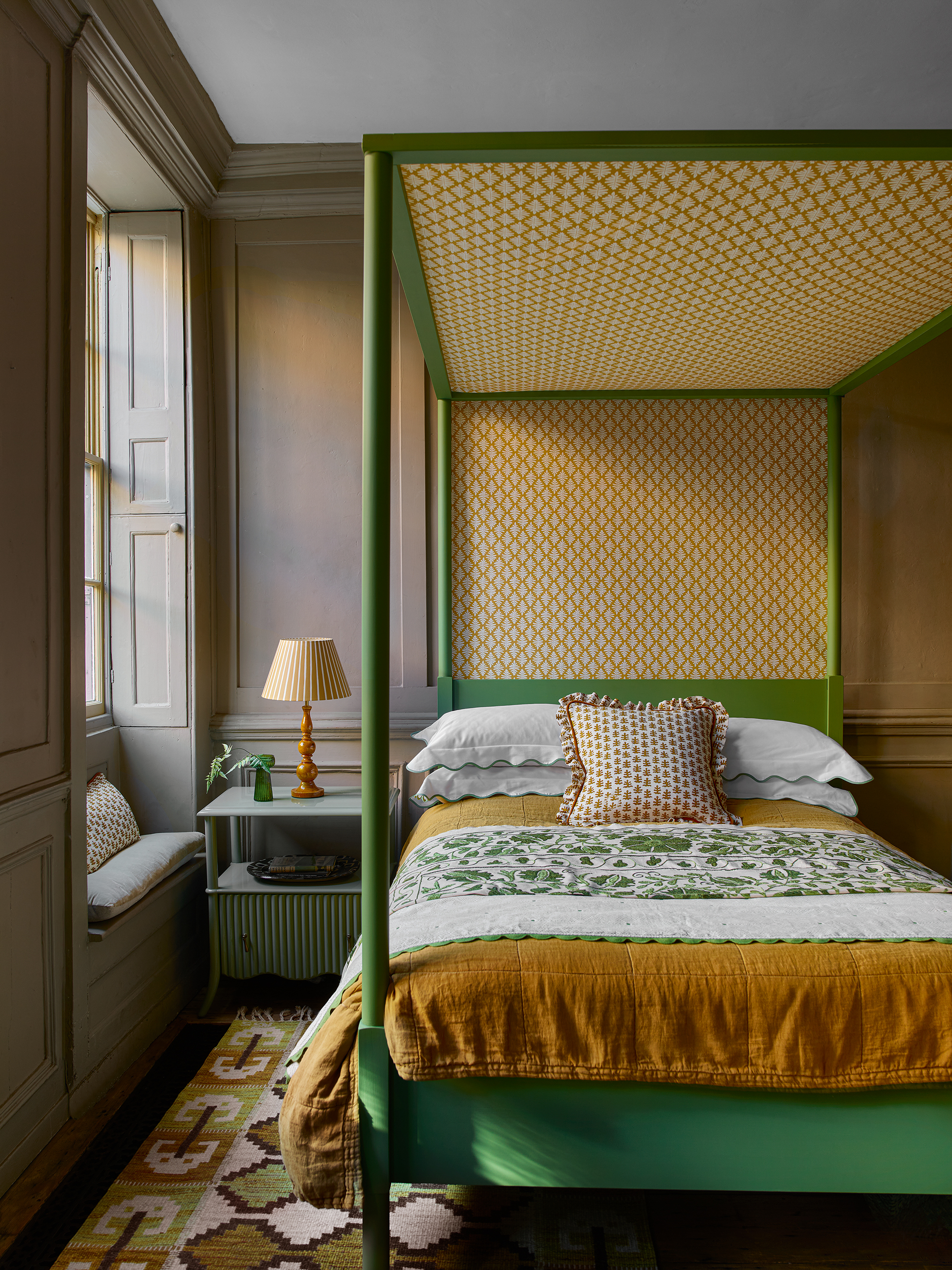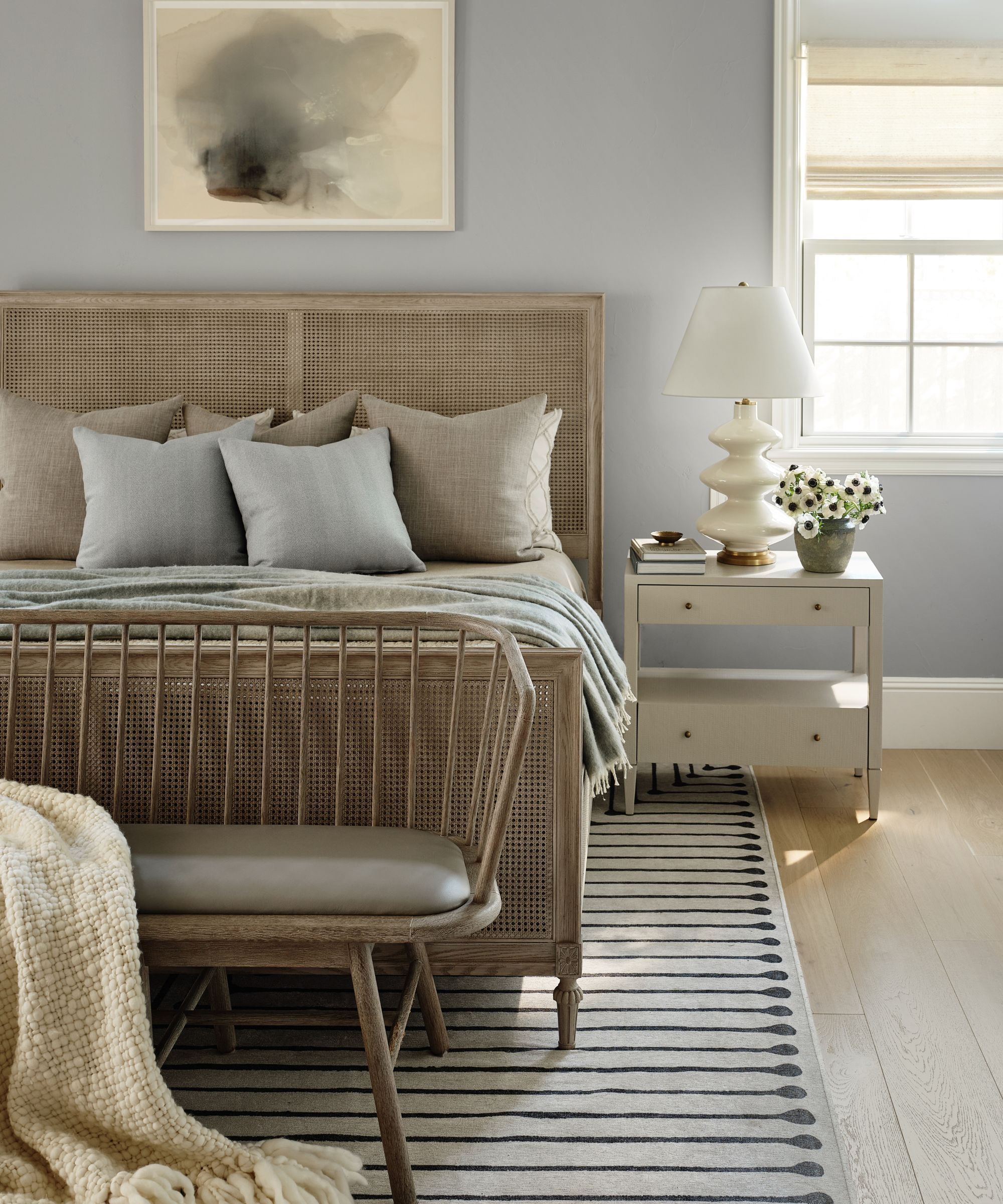Bedroom rug placement rules – the 6 simple principles interiors experts use
Make a bedroom stylish and cozy with rug placement rules from the pros


Getting the placement of a bedroom rug right will bring appealing texture and color to the room. And it will make any bedroom more luxurious by providing comfort underfoot.
But if a bedroom rug is to be an asset, correct positioning is a must and that’s why interior designers have a few principles in mind when they’re placing a rug in a bedroom.
Here, we’ve shared the rules they use for bedrooms when it comes to rug placement so you can skip bedroom design mistakes and enjoy the style boost a rug brings.
6 must-know bedroom rug placement rules
Clever bedroom rug placement means thinking about issues such as the rug’s dimensions, the size of the bed, the bedroom layout, and more. This is how designers get it right.
1. Focus on the bed area

Considering the room as a whole, it’s the area beneath the bed on which designers concentrate, and this is for a few very good reasons.
‘Placing a rug under the bed can anchor the room and define the sleeping area, providing a soft landing for your feet in the morning,’ explains Rayana Schmitz of Firefinish Interiors.

Rayana Schmitz is founder and principal designer of Firefinish Interiors. She was in fire school when she began refinishing vintage furniture as a side job with a close friend. For more than four years, her business grew as she built her own home, designing the interiors as she went. Now a seasoned designer, Rayana’s work is best described as sophisticated and timeless with a subtly modern edge.
2. Factor in bed size

The size of the bed in relation to the size of the rug is crucial in order to get the placement right.
Design expertise in your inbox – from inspiring decorating ideas and beautiful celebrity homes to practical gardening advice and shopping round-ups.
‘My rule of thumb when it comes to rug sizes for bedrooms is straightforward: opt for an 8 x 10 foot rug for queen beds and a 9 x 12 foot for king size,’ says Rayana Schmitz.
‘However, flexibility is key. If your space can accommodate a larger rug, go for it; it will help anchor and define the room better. On the other hand, if your space is more compact, consider downsizing by one size to maintain proportion.’
Eddie Rider, interior designer at Designers Lane podcast, agrees. ‘I love to use either a 9 x 12 or 10 x 14 under a king size bed, either California king or standard king, depending on the space of the room,’ he says. ‘Typically a 9 x 12 in the majority of spaces, but a 10 x 14 is fantastic.’
3. Measure meticulously

As well as thinking mattress size, there are other factors it’s vital to consider to get the placement right, so get measuring.
‘Considering the overall bed size in relation to the mattress size is crucial, as it’s the headboard and bed frame that determines the required coverage, along with any adjacent furniture,’ says Allison Babcock of Allison Babcock Design.
‘The cardinal rule is to measure meticulously. When uncertain, always refer back to this initial step when choosing a rug. The importance of accurate measurements cannot be overstated. When selecting a rug size, ensure its width is at least equal to the combined width of the bed frame and night tables. I like to work with rectangular rugs because I find them to be the shape that works the most in bedroom spaces.‘

Allison Babcock is a Sag Harbor, NY based, nationally recognized interior design authority, known for her sophisticated aesthetic: a modern sense of elegance that is fresh, crisp, and comfortable, imbued with warmth and enhanced by subtle details like sumptuous textiles and organic materials.
4. Think distance from other furniture

Take into account other furniture in the bed area for good rug placement.
‘Typically, we start the rug about 6 to 12 inches from the nightstand,’ says Rayana Schmitz. ‘If the layout includes a bench at the end of the bed, we might adjust the rug placement accordingly to ensure there’s enough rug beyond the bench.’
Feet need to land on the rug, of course, so Eddie Rider follows this principle: ‘I typically run the rug about 80 inches up the bed, so when you step out of the bed, you are on the rug. I also run the rug perpendicular to the bed, so the rug is wider than the bed.’
5. Consider doors

Interior designers also consider the rug’s placement in regard to other features of the room. ‘When positioning rugs near doors or transitions, ensure they don’t create tripping hazards,’ says Allison Babcock. ‘The rug should extend close to the end of the door opening or stop before it altogether.
‘Also, make sure the rug and pad don’t obstruct door movement, and adjust door heights if necessary, particularly if you own the property.’
6. Take wood floors into account

If the bedroom has a wood floor, factor this in when positioning the rug. You want to be able to see some of that lovely wood underneath the rug, creating a clear border.
‘For rooms with wood floors, leaving a border of wood visible, approximately 12 to 18 inches wide around the furniture, can create a floating effect,’ suggests Allison Babcock.
7. Use a bedroom rug placement to make the room feel bigger

Placing a rug under a bed can create the appearance of a room that’s larger than it really is. ‘Opting for a rug that extends beyond the sides and foot of the bed can add visual interest and make the room feel larger,’ says Rayana Schmitz of Firefinish Interiors. It makes even more of the room’s centerpiece, which is the bed, and it can also make the design of the room more cohesive.
Choosing bedroom flooring, including rugs, can allow you to indulge in the most luxurious of choices as it’s a space that doesn’t receive heavy foot traffic. Wood floors for bedrooms are a characterful and popular choice, but there are fans of bedroom carpet, too, since it makes the room super cozy. Just like wood it can be teamed with a rug for ultimate luxe.

Sarah is a freelance journalist and editor. Previously executive editor of Ideal Home, she’s specialized in interiors, property and gardens for over 20 years, and covers interior design, house design, gardens, and cleaning and organizing a home for Homes & Gardens. She’s written for websites, including Houzz, Channel 4’s flagship website, 4Homes, and Future’s T3; national newspapers, including The Guardian; and magazines including Future’s Country Homes & Interiors, Homebuilding & Renovating, Period Living, and Style at Home, as well as House Beautiful, Good Homes, Grand Designs, Homes & Antiques, LandLove and The English Home among others. It’s no big surprise that she likes to put what she writes about into practice, and is a serial house renovator.